As the school year picks up for the Spring semester, it is time once again for us college students to get organized. Some of us love it, some of us dread it, and most of us maybe just aren’t as good at it as we need to be.
Since I have ADHD, I can readily sympathize with the struggle of getting one’s shit together. It’s easy to lose things, to forget where something is written down, or to just procrastinate while trying to keep track of all the tasks you have to do. So when I started seeing people on the web talking about a new trend called the “Bullet Journal,” I dismissed it – surely my distractible, inattentive mind could never keep something like that up.
But later, I revisited the idea, deciding to learn what the bullet journal trend was all about. And now, a little over a year later, I’ve set up my third incarnation of my personalized journal, ready to face the semester head-on. Having my own individualized planner—let’s call it a b-journ, for short—has increased my productivity, my time management, my task completion, and my self-awareness. For that reason, I now want to share my experiences so that other college students can benefit too.
So what is a Bullet Journal, anyway?
A bullet journal is whatever you need it to be. Sounds like some faux-zen bullshit, but it’s actually true – your b-journ can function as a planner, an organizer, an analog PalmPilot, a diary, a log, or anything else.
The premise of bullet journaling is to keep a notebook of some sort that contains everything you need to keep track of in your life in a concise, structured way. It can have whatever bits and pieces you want, but most of the time these include a log section with daily, weekly, or monthly spreads, so that you can plan and schedule what you need to do or record what you’ve already done. How you structure this, what you keep track of, and additional pages, spreads, or sections are all up to you.
Why should I use one?
Not everyone will benefit from a bullet journal. Some people work better from pre-structured planners or diaries, or perhaps they don’t have the energy or devotion to fill in all the necessary pieces. But for many, a b-journ can be the missing piece to maintaining organization and productivity in your life. Here are some things I like about b-journaling:
- It gives far more flexibility than on-the-market planners.
- It holds you accountable.
- It keeps everything in one place.
- It’s fulfilling to use.
- It’s super fun to customize!
Plus you can practice your penmanship...
What do I put in a bullet journal?
Whatever you want! No, seriously. The point of a bullet journal is to compile all the information you need, organized and concise, in one notebook. Mine is laid out like this:
[1] Contacts (Usually this is professors' numbers, e-mails, and office hours, plus anyone else important – like counselors or doctors – that I might need the info of.)
[2] Key (This lists all the symbols I use as shorthand throughout the journal.)
[3] Academic Calendar (Includes holidays, breaks, and deadlines.)
[4] Semester Schedule (Color-coded with highlighters.)
[5] Budget Goals (Divided into small, medium, and large for how much $$ they are.)
[6] Habit Tracker (I number the long edge of these pages with the days of the month – each month gets its own color – and the short edge with things I need to keep track of. Then I put an X in a box on the chart whenever I accomplish that thing on that day.)
[7] Calendar (Each month gets its own page on which I put any notable events, holidays, or birthdays, and a boxed section for monthly goals. The rest is divided into weekly spreads with a half a page for each day of the week, and one half page section at the end of each week for an overview.)
[8] Meds List (Here I keep track of all the medications I take, at what dosages, and when. This is useful to have handy for doctor visits, possible emergencies, and whenever I add new meds.)
[9] To Do List (Other than the title, this page is blank – I can put a sticky note list on it to keep track of To Dos, and replace it whenever all those things are complete.)
[10] Shopping List (Same as above.)
[11] Projects (I can use Post-Its on this page to keep track of what I need to do next for various projects.)
[12] Friends (I like to keep a reminder of friends and acquaintances I can chat with, because I often forget to keep in contact without meaning to.)
[13] TV Shows (Each show gets a section, and each season a subsection. I can cross off the episode numbers as I watch them.)
[14] Bookshelf (On this page I can draw in books I intend to read this year, and color them in once I’ve finished them.)
[15] Movie Time (Like the bookshelf, I can put movies I want to see here, and color them in when I’ve watched them.)
Your journal can be as complex or as simple as you want. Some people love to keep many lists, while others prefer to focus on goals and calendars. You can include pages for yearly resolutions, memories, quotes, highlights, songs, inspiration; you can focus on daily schedules, trackers, monthly calendars, journal pages; or you can do a little (or a lot) of both. It’s entirely up to you. Plus, there are lots of good resources online to give you ideas and examples.
And some of them just exist to make you feel inadequate.
How do I use the bullet journal?
Daily. The end, that’s it, the most important part.
The hardest part of staying organized is staying on top of things, and the most useful weapon you have to combat that is a strongly ingrained routine. Make a habit of filling out or checking off your bullet journal at least every day (even if it’s as simple as checking off a meal or an assignment), and it will force your brain to accommodate the journal as part of daily life rituals. This makes it harder to forget and easier to keep up with.
More than that, make it useful. You won’t feel compelled to check or fill out your bullet journal if you’re keeping your most important assignments listed somewhere else or relying on seven different apps to maintain your life order. A bullet journal benefits you because it puts all your priorities in one book and therefore forces you to use it. I love technological gadgets as much as the next guy, but research shows that interacting with information physically (i.e. “analog”) uses a different part of your brain than when you do so digitally. This isn’t bashing the benefits of technology, but rather suggesting you don’t forget to include both.
For me, I make a compromise by putting the mention of helpful apps IN my bullet journal habit tracker. This reminds me to use them as resources, but also promotes me keeping track of everything in the same place and physically checking off the information. If you rely heavily on electronic organizers or reminders, it might benefit you to do the same.
What do I need to get started?
A notebook and a pen. That’s it!
Need a little more guidance than that? No prob, fam, I got you. Most b-journalers prefer notebooks with dotted or squared pages, because this makes it easier to draw lines wherever you want and divide sections neatly. Ideally, a bullet journal is small enough to be portable, but not so small you can’t write legibly in it. Here are a few favorites. (I use the Moleskine, personally.) I also really like this Moleskine band pocket thing – you slip it around the front cover of your notebook, and then you can keep pens or rulers or what-have you inside of it so that your pens and journal are always together.
A lot of bullet journalers fuss over fancy pens, liners, and decorative washi tape, but you don’t need any of that if you don’t care as much. If you do want to add some color to your headers or symbols, the Staedtler liners are nice for a hard line, and brush tip markers are good for larger areas or softer background color. I use the Sharpie pen (fine) for my outlines, headers, and dividers—I like it because it doesn’t smear—and my trusty Pilot G-2 (.05) for notes and filling in, because it’s a finer line.
Alternatively, you could use whatever damn pen you happen to have lying around, because it’s your journal and you don’t have to spend any more money than you want to. (Oh, yes, let’s be real – I just name-dropped some pen brands, but those were, in fact, the instruments that I happened to already have.)
If you have trouble starting off stuff on your own, check out some of the printouts available online, which you can tape or paste into your notebook as needed. Or follow some b-journalers on Tumblr, Pinterest, or Instagram for inspiration.
I have ADHD / bad memory / executive dysfunction / [something else] too, and it’s hard for me to keep up with things. Do you think I can really maintain a bullet journal?
Short answer: yes. Long answer: honestly, every person is different and whether you want to dive in is up to you. But I think the biggest factor of success in bullet journaling is knowing what works for you. Notice I didn’t say what you want to work for you, but what actually works for you. Do that, and you're golden.
Me, I need very visual and obvious reminders for things, so I put tabs on the different sections of my planner. I also updated the design a few times to make things easier on myself. For instance, I used to keep my habit tracking log in the back of the journal, which made it hard to access and read, and I wasn’t always sure what I wanted to keep track of, so I left a lot of it blank. This meant that when I went to check things off, it took a lot of time and thought, and eventually I stopped doing it. So when I realized it wasn’t working anymore, I changed it up. I put my habit tracker right up front where it was easy to find, wrote the dates in different colors per month so that it was visually more comprehensible, and took the time to write in each section on each page for the year so that I would save myself energy in the future.
Old and new.
Don’t be afraid to ditch what isn’t working for you, cross shit out, fill stuff up, get crooked, be messy, change your mind, add new things, make mistakes, and start over. Just like anything in life, you get out of something what you put into it, so keep a bottle of White-Out handy, make sure your pens have ink, and go get journaling!
And in the meantime, if you ever want to ask me personally about my bullet journal or request some tips, just drop me a line.




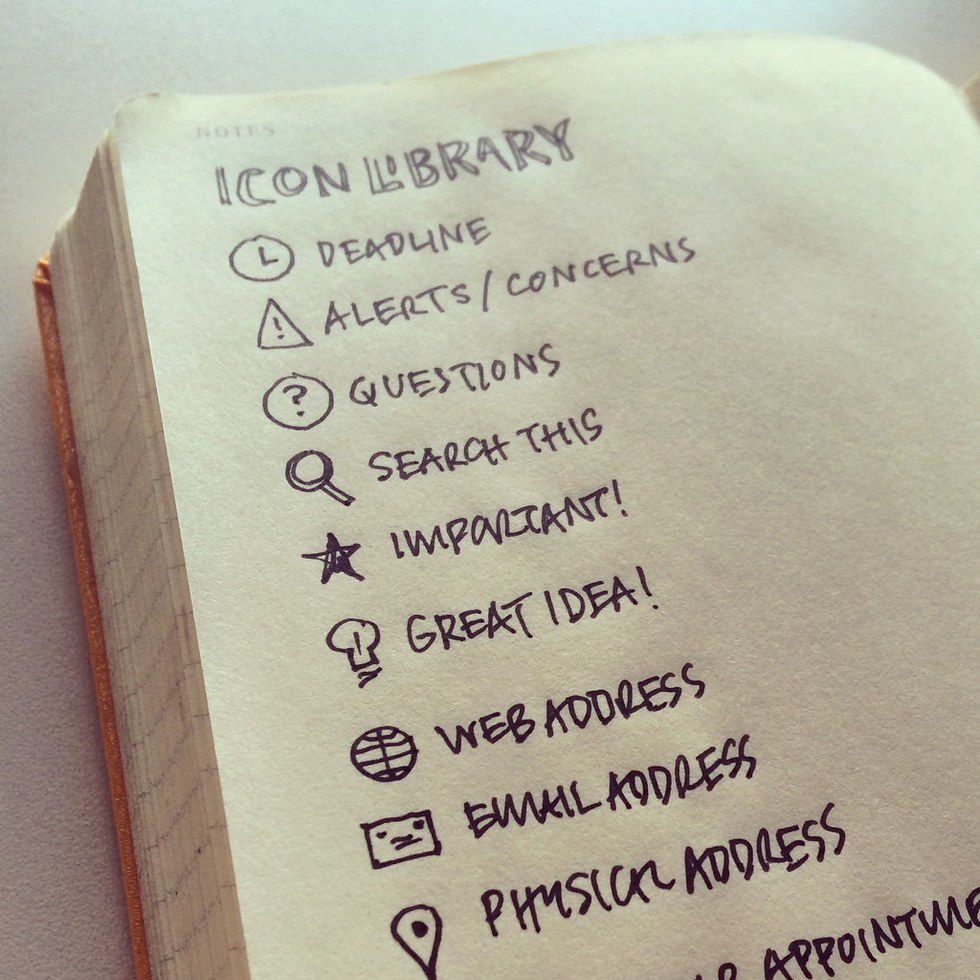
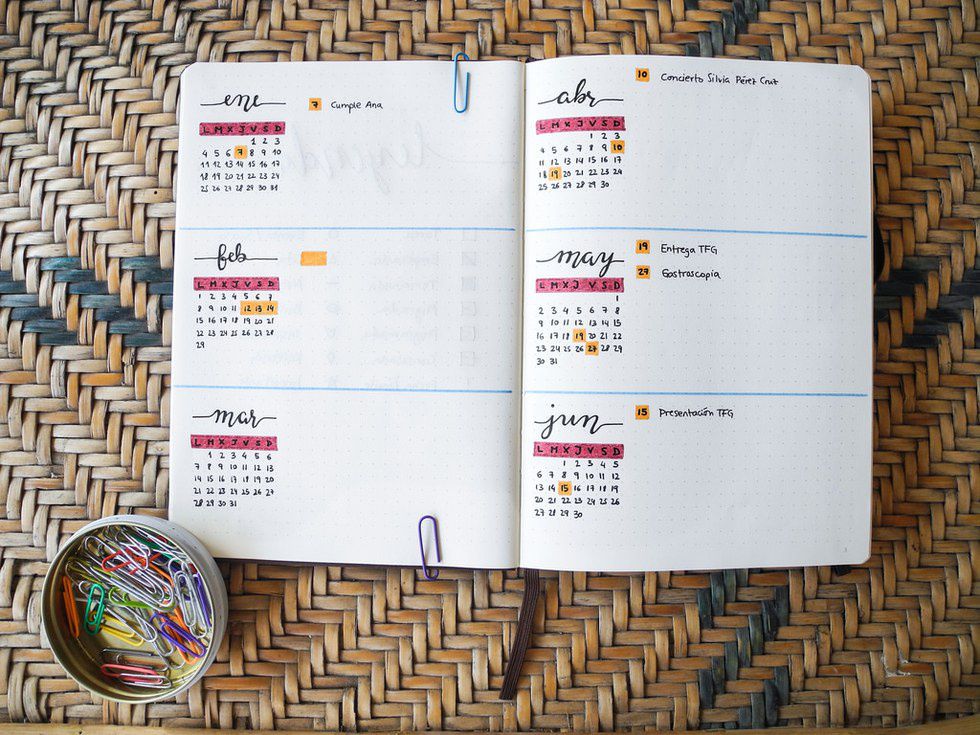
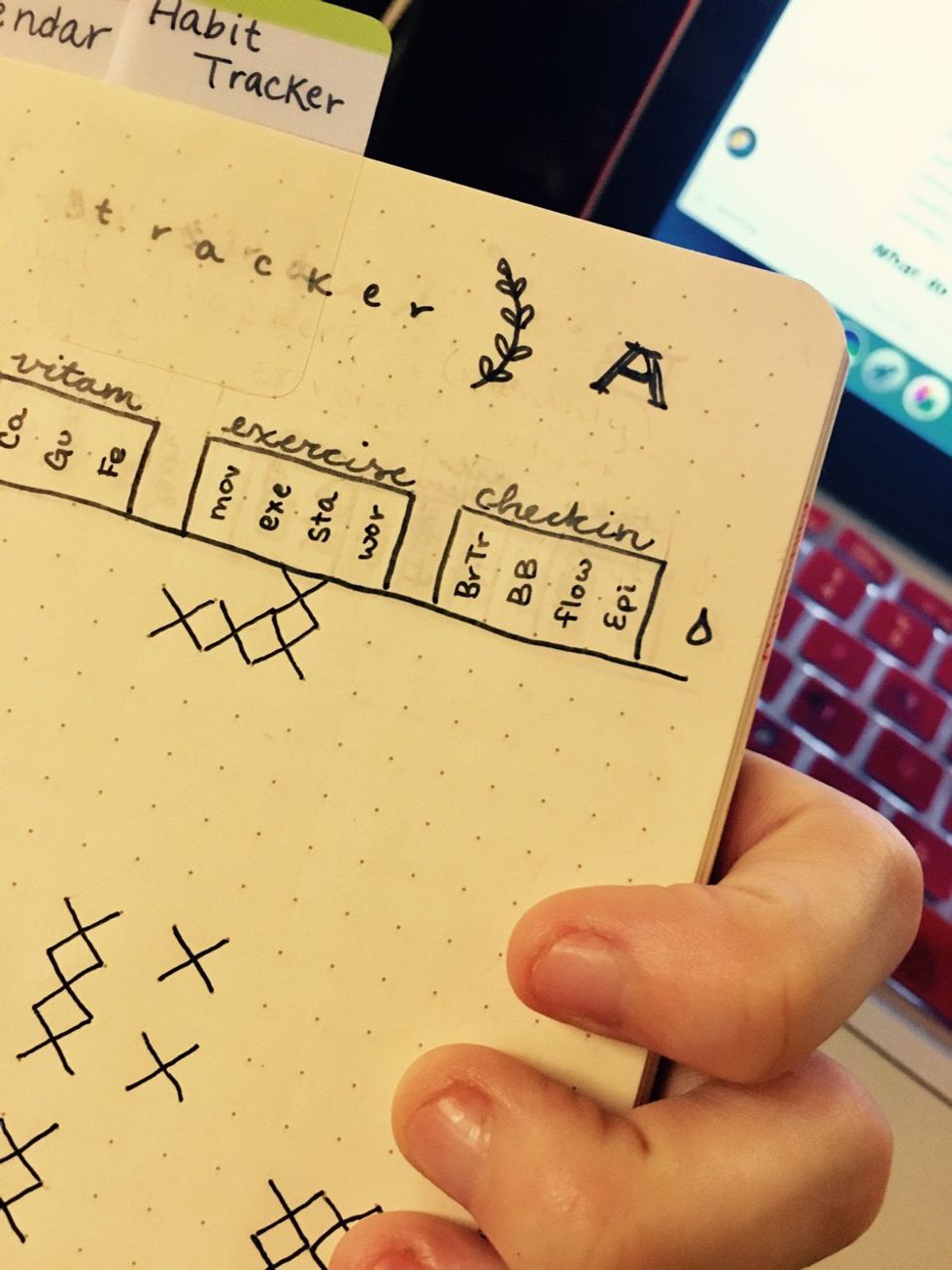
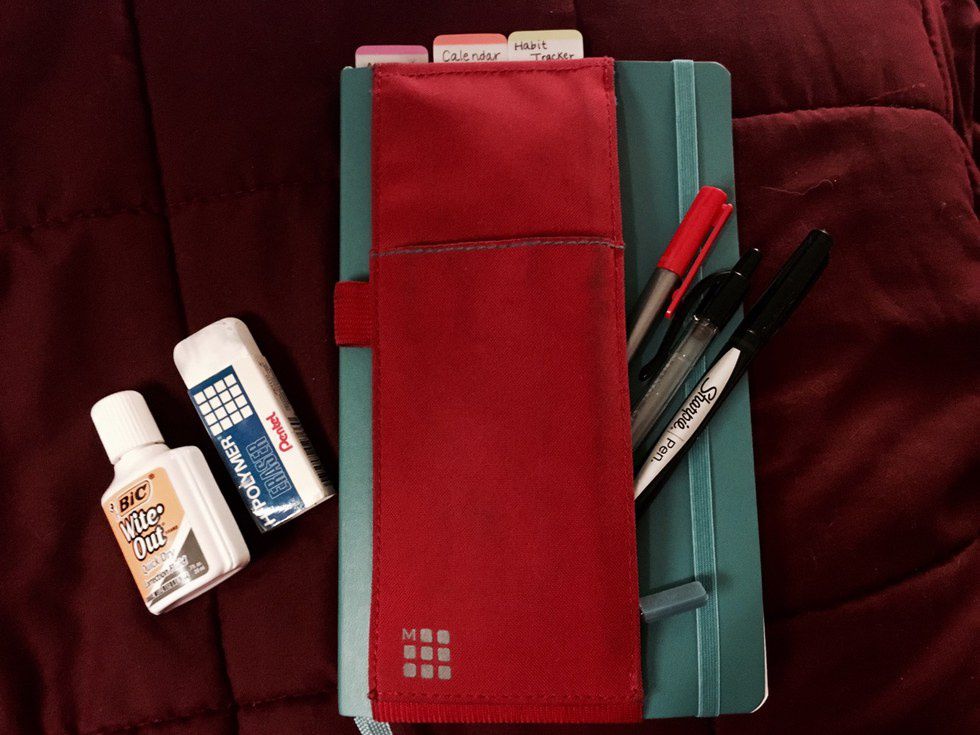
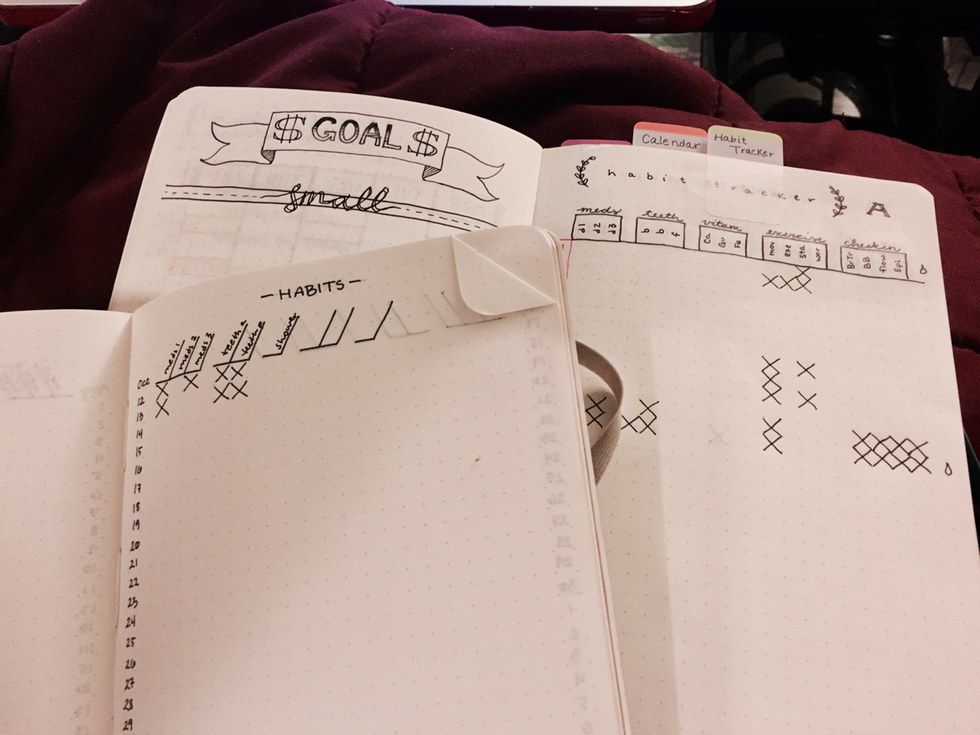









 Photo by
Photo by  Photo by
Photo by  Photo by
Photo by 










